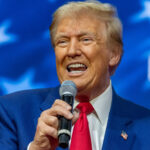India, a nation celebrated for its vibrant tapestry of cultures and traditions, stands at the cusp of a pivotal moment as it navigates the 2024 general elections. Much like the intricate movements of India Dance, the political landscape is a complex interplay of various issues, rhythms, and narratives. This analysis delves into the key themes shaping the electorate’s choices and the profound implications of the election outcomes, mirroring the dynamism and expressiveness inherent in India’s dance forms.
The electoral agenda is rich with multifaceted issues. Caste dynamics and the socio-political reverberations of the caste survey are significant factors, akin to the foundational steps in many India dance forms that dictate the subsequent movements. The Ram Temple issue, a focal point of cultural and religious identity, resonates deeply across segments of the population, influencing political discourse much like the emotive storytelling in classical India dance. Geopolitical concerns, including the complexities of the China border situation and the internal strife in Manipur, add layers of intricacy to the political choreography, demanding strategic responses and impacting voter considerations.
Economic factors, while often perceived as central, present a nuanced picture in the Indian electoral context. Joblessness and inflation, palpable anxieties for many citizens, are akin to the underlying rhythm that influences the overall tempo of the political dance. Yet, their direct translation into electoral decisions is not always straightforward. Historical trends suggest that socio-cultural issues often take center stage, swaying voter preferences in ways that economic indicators alone might not predict. This interplay mirrors the way in which India dance, while technically precise, is also deeply influenced by emotional and cultural contexts.
Furthermore, the intersections of gender, caste, religion, and class form critical axes of analysis. These elements are not isolated but intricately woven together, shaping individual experiences and collective political behavior. The media’s role in articulating these issues and informing public opinion is paramount. Just as a dance performance is shaped by its presentation and interpretation, the narrative constructed by the media significantly influences public perception of these critical societal themes.
The 2024 elections are poised to exert considerable influence on India’s trajectory. The outcomes will not only determine the nation’s leadership but also chart the course of its democratic evolution. The stakes are high, with the potential to either consolidate or disrupt India’s democratic journey, impacting the lives of over 1.4 billion people. This critical juncture is akin to a climactic movement in India dance, where the culmination of steps and expressions determines the overall impact of the performance.
The electoral results will inevitably shape the careers of numerous political figures and the destinies of various political parties. The ideological currents that gain prominence will mold India’s power structures, with potential ramifications extending beyond national borders to influence regional and global dynamics. This transformative potential mirrors the way India dance, while rooted in tradition, continues to evolve and influence global dance forms.
Looking ahead, the implications of the 2024 elections are far-reaching and deserve careful consideration. This electoral process acts as a mirror reflecting contemporary India – its aspirations, challenges, and evolving identity on the world stage. Understanding the nuances of these elections is crucial for grasping the trajectory of this significant global player, much like appreciating the intricacies of India dance provides insights into the nation’s cultural soul.
Speaker Biographies:
Ravi Agrawal brings a global perspective as the Editor in Chief of Foreign Policy and author of “India Connected: How the Smartphone Is Transforming the World’s Largest Democracy.” His extensive experience at CNN, including his tenure as South Asia bureau chief, provides a rich backdrop for analyzing India’s political and social dynamics.
Devesh Kapur, a Starr Foundation Professor at Johns Hopkins SAIS, specializes in South Asia studies. His research on human capital, public institutions, and the impact of global linkages on developing countries, particularly India, offers valuable insights into the structural forces shaping the nation’s political economy.
Aseema Sinha, holding the Wagener Chair at Claremont McKenna College, focuses her research on the political economy of India and India-China comparisons. Her expertise in international organizations and India’s rise as a global power provides a critical lens for understanding India’s evolving role in the international arena.
Sushant Singh, a lecturer at Yale University and senior fellow at the Centre for Policy Research, offers a unique perspective informed by his background in both journalism and the Indian army. His deep understanding of strategic, national security, and international affairs, gained from his time at The Indian Express and The India Cable, enriches the panel’s analysis.


